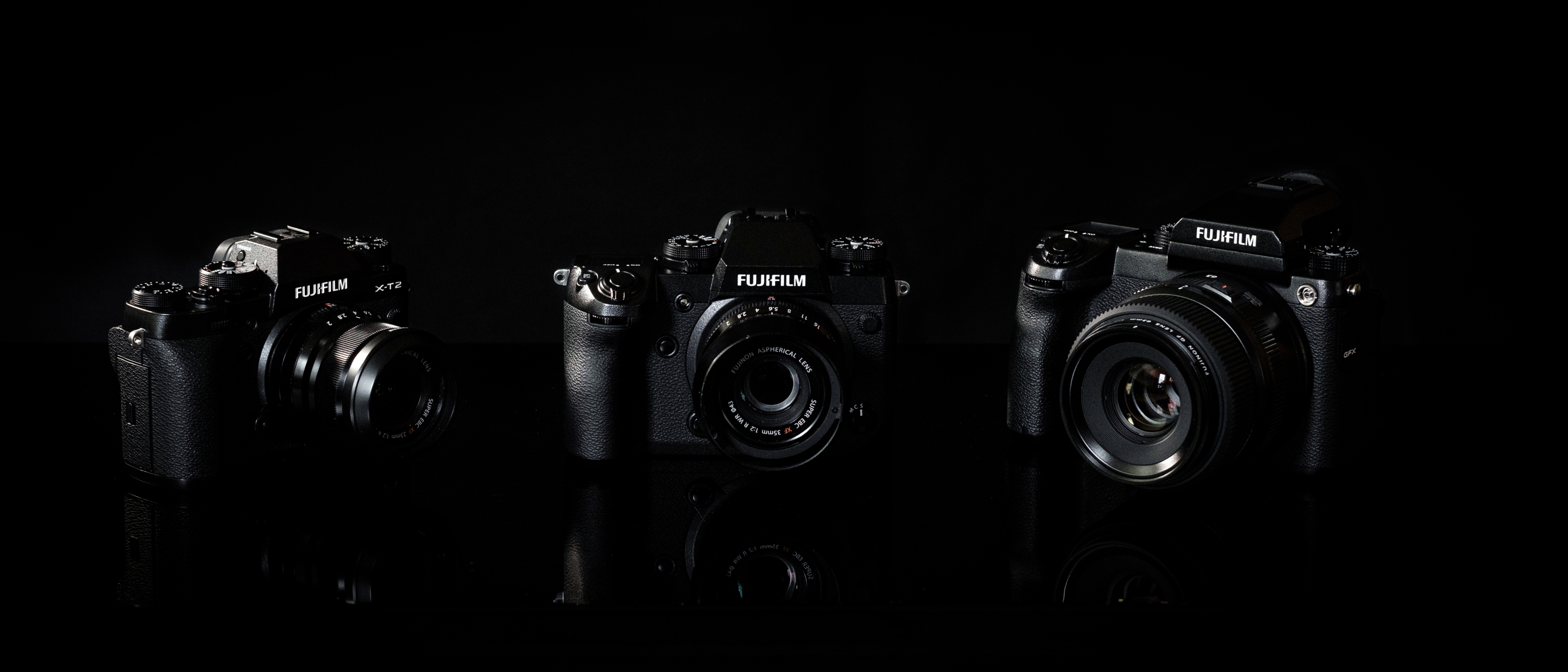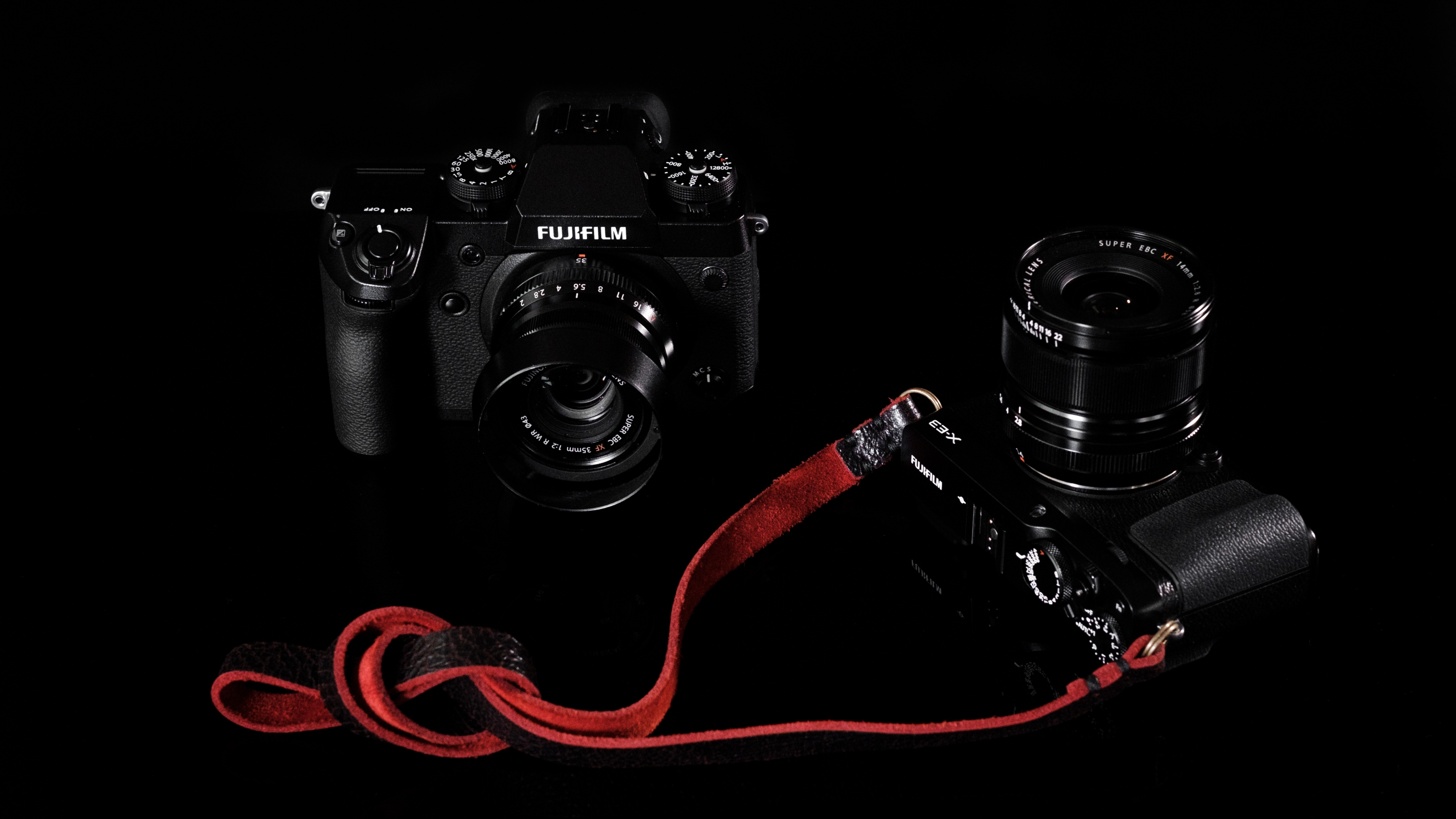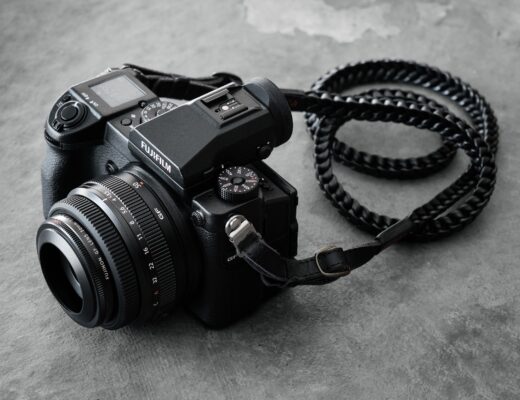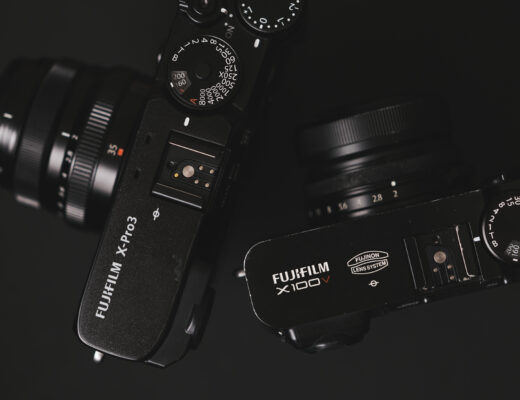Hello non-videographer Fujifilm photographers, how are you? What do you think about the new X-H1 camera? Too big, too heavy, no exposure compensation dial, no threaded shutter, weird Q button placement, anything else? Perhaps you are considering the X-H1 because of the new IBIS system? Is that one feature enough to ditch your X-Pro2 or X-T2? It’s clear from the specs that the new Fujifilm X-H1’s greatest design attribute is that it is one of the best hybrid stills/video camera system on the market today. In combination with existing X series lenses and the newly announced MK lenses in X mount, I can see DSLR and mirrorless videographers from other brands consider making the switch over to Fujifilm.
My assumptions were confirmed at a recent Fujifilm X-H1 launch event in Vancouver, where 80% of the presentation focused on the new video features, and the majority of questions were coming from non-Fujifilm videographers asking very technical video-centric questions. None of this is to dissuade anyone who really wants the X-H1 even if you don’t care about video, because the X-H1 has many improvements over the current line-up X Series cameras as a stills shooter.
Why would a current Fujifilm user want to upgrade to the X-H1? The number one reason: IBIS. Although Fujifilm has always claimed IBIS (In Body Image Stabilization) wasn’t possible with the X series bodies, they were able to pull it off with the new X-H1. It was a 100% in-house design (Fujifilm did not buy the technology from Sony, Minolta or Olympus) and this is what accounts for it’s larger size. Billy Luong of Fujifilm Canada said that over time they will be able to miniaturize the IBIS mechanism, but for now it can only fit into the larger X-H1 body (and perhaps into a future GFX 50S mark II). An offshoot benefit to the larger body is a stronger structure (25% thicker magnesium alloy body), more weather sealing, and an improved coating for improved scratch resistance. This larger body also has a larger GFX-like front grip, which also allows for the top panel sub LCD menu screen, but at the cost of losing the dedicated exposure compensation dial. If you have larger hands, or you want a more rugged camera body, the X-H1 is the most solidly built X series camera to date. It feels like a beast!
The next major benefit to the new X-H1 may sound boring, but it will change the way you interact with your camera. It’s the new feather-touch shutter button in conjunction with the shutter shock absorption mechanism. Pressing the shutter is so buttery smooth, so quiet, and so sensitive that initially I kept pressing the shutter accidentally. It feels like a pro series DSLR shutter button, but without the after-effect of the flapping mirror. In fact, even compared to other X series cameras, because of the shock absorption mechanism, you can barely hear the shutter outdoors, let alone feel it. If you compare back to back against the X-T2, you will notice the difference immediately. The X-H1 sets the new standard for shutter button sensitively and shutter absorption.
The final major feature on the X-H1 that will benefit photographers is the top panel sub menu. These top panel menus have been around since the film SLR days, so it’s nothing new, but it’s great to have. Fujifilm uses e-ink technology, so even with the camera turned off, you can see basic information at a peak (which card slots in use, how many frames left to shoot, exposure comp setting, battery power). This again is at the cost of a dedicated exposure compensation dial, so this may not be something you’re willing to lose; but my guess is the X-T2 replacement will probably get the top menu as well. Moreover, these three physical changes to the new X-H1 should be the primary reasons why a stills photographer would want to upgrade from their current camera body. The touch screen and BlueTooth are also new (the X-E3 already has both) but I don’t think a photographer would drop their X-T2 for these two features alone. As well, the majority of the other features can most likely be upgraded via firmware on the X-T2 and X-Pro2 (improved AF, Eterna film simulation, flicker reduction).
To conclude this article, let’s quickly compare the X-H1 with other existing X series cameras and summarize the main benefits and detriments of upgrading your current X series camera body.
X-T2: Other than gaining IBIS and a new shutter mechanism, many stills photographers will appreciate the lighter weight and smaller size of the X-T2 over the X-H1. The X-H1 might have a higher pixel EVF, but the X-T2 has a larger view, so there was no visual benefit. The loss of the exposure compensation dial might be the deal breaker for some. Touch screen is great, but until Fujifilm allows touch for menu scrolling, there’s no need to upgrade to gain a touch screen
X-Pro2: You love the X-Pro2 because of the hybrid viewfinder and the rangefinder aesthetics. You lose both when upgrading to the X-H1. You also gain in size and weight, something you considered when choosing between the X-T2 and X-Pro2. This difference is magnified when putting the X-Pro2 against the X-H1. The biggest difference you will feel is in the bigger grip and improved shutter; but at the cost of a bulkier profile and loss of the threaded shutter button. No more hipster soft shutter buttons!
X-E3: You love the X-E3 because of the rangefinder aesthetic, it’s compact size and weight compared to the X-Pro2, and the fact it’s half the price. you lose all of these benefits when moving up to the X-H1. The X-E3 already has amazing AF, the image quality is going to be exactly the same as the X-H1, and much of the internal improvements can be had via firmware update. I don’t see too many X-E3 photographers opting to upgrade to the X-H1.
GFX 50S: Although both cameras share many ergonomic features, these two cameras couldn’t be more different. The EVF is horrible on the GFX when comparing against the X-H1’s. the AF on the GFX is also light years behind the X-H1 (it’s contrast detect only), and lens options are very limited (for now). However, you bought the GFX not for it’s lightning AF, fast refresh EVF or tons of lenses. the GFX is a digital medium format with an amazing sensor and world class lenses. Much of the improvements on the X-H1 will probably find its way into the next generation GFX (better EVF, improved AF, IBIS, Bluetooth, soft shutter mechanism, etc.), so most GFX photographers will stay put.
Moreover, there’s plenty of reasons why a stills photographer would want to upgrade to the new Fujifilm X-H1 camera body, but at a cost. Other than IBIS, the new shutter and the sub menu, I don’t see a huge reason for X-T2, X-Pro2 and X-E3 photographers to upgrade right now. As a hybrid stills and video camera, the X-H1 is one of the top cameras currently available. For someone like me who equally shoots video and stills, the X-H1 is perfect. For a stills photographer, you will immediately feel the difference in size and weight, although I don’t think you’ll see a drastic improvement in your photography. IBIS is great, but remember it stabilizes you, not your subject. For those who wish for the newest and best from Fujifilm, the X-H1 is the logical upgrade, especially if you shoot video. However, for the rest of the X Series photographers who only shoot stills, the X-H1 (the ‘H’ stands for ‘High Performance’) is a logical upgrade if IBIS is something you absolutely need or want for your photography. I’ll be taking the X-H1 with me to Hong Kong for two weeks to shoot both video and stills. Look for an in-depth review once I return. Thanks for reading and happy shooting.






















